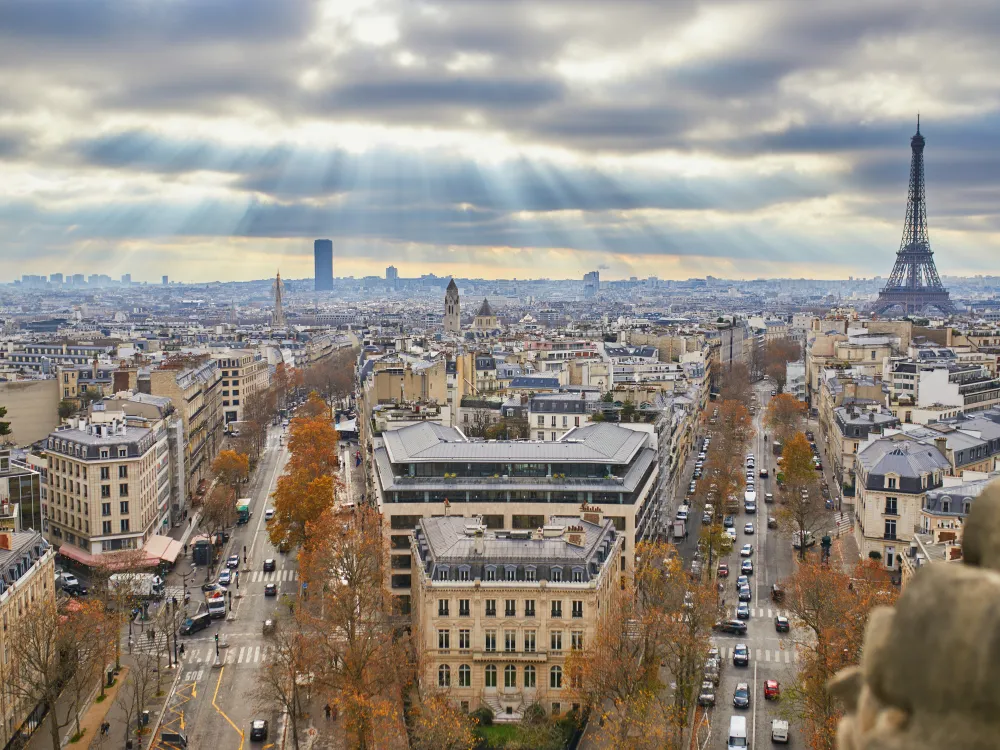
Traveling in Style: How Global Tourism Economics Shapes the World’s Most Iconic Destinations
Travel today is motivated by more than intrigue; it is emerging from the growth of global income, greater consumer spending power, and the growth of the "experience economy." As global tourism continues to gain significance within the sectors of many countries, some destinations demonstrate a unique capability to combine cultural capital, high-end services and strong development to attract travellers looking for premium experiences.
These destinations balance aesthetic value, value for money, economic competitiveness, and efficient quality of service in tourism services, creating a type of luxury, where luxury is not only defined by price, but also experience of economics: time quality, access, rarity, amenities, abundance, and cultural assets.
Visiting from the States? Explore destinations and deals on Hellotickets USA and see how these global tourism destinations utilise these economics and culture to create a rich and unforgettable experience.
Paris: The Market Leader in Cultural Capital
Paris continues to be a city that ranks high on travel lists globally, partly due to its blend of cultural and artistic heritage anchored to a sophisticated hospitality ecosystem. The local economy of Paris is significantly dependent on tourism, and its comparative advantage relies on its cultural capital, brand presence, and urban infrastructure.
In hotel pricing we see a high degree of demand elasticity, which is why boutique hotels located in historical areas with high foot traffic charge the highest rates. High-end dining, luxury retail, and iconic museums and attractions have a multiplier effect that can again be described in terms of a strong local multiplier effect. Paris is a global example of a city that draws on cultural heritage to monetise tourism, and the intersection of heritage and economy is one of the most evident cases we see across the globe.
Kyoto: Experience-Based Value and the Economics of Tranquility
Kyoto's attraction resonates in its mixture of tradition, rarity, and tranquility — all of which create high experiential value for those traveling there. Many travel narrative participants are willing to pay high prices for tea ceremonies, temple visits, and stays in ryokans — an experience that is increasingly hard to find in modern life — which is tranquillity itself.
This is a clear example of the economics of authenticity-based tourism — where the supply of limited, authentic offerings (such as a traditional inn or ceremonial experience) meets high international demand. Kyoto is a prime example of how the intangible assets of ritual, aesthetics, or historical memory can be transformed into high-value economic assets by their preservation and delivery with cultural accuracy.
The Amalfi Coast: Premium Pricing Through Natural Scarcity
The Amalfi Coast, on Italy's southern coastline, exemplifies how natural scarcity produces high-value tourism. Due to limited developable land, and the inventory of available, cliffside land being fixed, demand outpaces supply, leading to high hotel average daily rates, seasonally high rates and robust returns for the hospitality sector.
Private boats, restaurants in small villages, and the famous cliffside terraces, all of which factor into the experience of visiting the Amalfi Coast, also take advantage of the model driven by scarcity. The transformation of natural beauty into high-value services driven by the scarcity of land results in high-value tourism that supports the local economy because travelers are willing to pay for exclusivity.
Marrakech: Craftsmanship and the Economics of Heritage
Marrakech continues to thrive because of the balance obtainable in its lively urban marketplaces and high-end hospitality. The Medina functions as a centre of microeconomic activity in which artisans make goods related to textiles, crockery, and lanterns — representing production based on craft rather than mass production.
Similarly, luxury riads employ a model which blends high value-added services, and privacy, architecture, and design which are culturally appropriate to Moroccan society. Marrakech illustrates how developing countries can capitalise on their heritage to develop demand for high-priced tourism and employment opportunities for artisan labour.
New York City: Urban Density, Diversity, and Global Spending Power
New York is a world leader in cultural, financial, and entertainment tourism. It experiences economies of scale in hospitality, restaurants, theatre, and retail that allow the city to accommodate millions of tourists while maintaining a high level of service quality.
SoHo, Williamsburg, and Midtown are examples of neighbourhoods that are focused on different cultural sub-sectors so that tourists can participate in high-value neighbourhood cultural experiences (fine dining, luxury shopping, performing arts, etc.) in a compressed urban area. NYC has one of the world's most diverse, innovative, and resilient tourism economies.
Cape Town: Natural Assets and Sustainable Tourism Growth
The tourism industry in Cape Town is a prime example of how natural capital drives economic activity. The combination of Table Mountain, coastal scenery, and premium wine regions provide the foundation for amazing experiences and services, from eco-lodges to fine dining.
As a long-haul destination, the demand is susceptible to global income trends and flight prices required to reach it, but it continues to compete by offering sustainable options, local cuisine, and unique cultural experiences, all of which impact sustainability and long-term value to tourism.
Dubai: Luxury Through Innovation and Global Investment
Dubai demonstrates the potential for a city to create tourism attraction and product via clear investment strategies. Through massive public sector capital expenditure, infrastructure investment, and innovation, the Emirate has allowed Dubai to solidify its place as a global leader in luxury retail, iconic architecture, and premium leisure experiences.
With progressive economic policies that favor investing in tourism and diversifying tourism, Dubai treats tourism and travel as a sophisticated export industry. Dubai's tourism product is differentiated by architecture, signature luxurious hotels, and year-round entertainment, with an economy designed to quickly scale.
Santorini: The Economics of Aesthetic Demand
The allure of Santorini is a special combination of architecture, landscape, and culture. The buildings' whitewash, the dramatic volcanic cliffs, and the well-known sunsets are aesthetically extreme and have positioned Santorini as a luxury destination, despite being a small destination.
With limited hotel supply, the cost of hotel room accommodations is a classic example of strong global demand for a product with inelastic supply of service, while boutique properties provide primarily nighttime accommodations at considerable nightly cost. Guests pay for nighttime accommodations after being offered some form of view of the landscape, tranquillity, and unique experience.
Traveling with Intention: The Economics Behind Stylish Exploration
Stylish travel is not just luxury - it is shaped by economic value, scarcity, cultural assets, and the society-wide shift towards spending money on experiences versus things.
Places like Paris, Kyoto, Amalfi, Dubai, and Santorini thrive because they have successfully found a way to convert local identity into high-value tourism services. Travel that is intentional is an economic exchange between the traveller and the destination where travellers are providing value for local identity, cultural preservation, local employment, and sustainable economic development.


